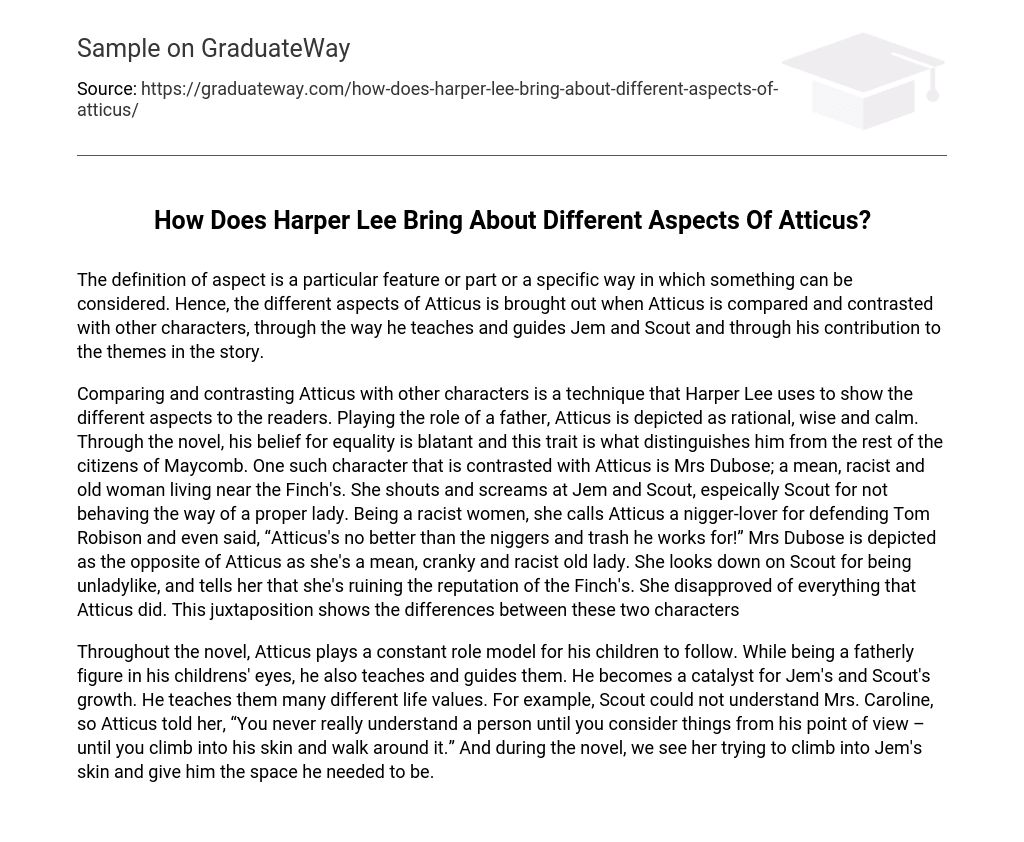The aspect can be defined as a specific feature or part or a distinct perspective in which something can be seen. Consequently, the various aspects of Atticus manifest when he is compared and contrasted with other characters, through his approach in teaching and guiding Jem and Scout, and through his contribution to the themes within the story.
Harper Lee utilizes the technique of comparing and contrasting Atticus with other characters to showcase diverse aspects to the readers. In his role as a father, Atticus is portrayed as rational, wise, and composed. Throughout the novel, his unwavering belief in equality is evident, setting him apart from the other inhabitants of Maycomb. Mrs. Dubose, a cantankerous and racist elderly woman residing near the Finches, serves as one such character contrasted with Atticus. She berates and shouts at Jem and Scout, particularly targeting Scout for not conforming to societal expectations of a proper young lady. Being prejudiced, she slurs Atticus by labeling him a “nigger-lover” for defending Tom Robinson and even goes so far as to say, “Atticus’s no better than the niggers and trash he works for!” Mrs. Dubose stands in stark contrast to Atticus as she embodies meanness, irritability, and racism. She condescends to Scout due to her unladylike behavior and admonishes her for tarnishing the Finch family’s reputation. Disapproving of everything Atticus does, this juxtaposition effectively illustrates the disparities between these two characters.
Throughout the novel, Atticus serves as a constant role model for his children, guiding them and teaching them valuable life lessons. He is seen as a fatherly figure in their eyes and acts as a catalyst for their personal growth. Atticus imparts important values to Jem and Scout, such as the understanding that one must consider others’ perspectives in order to truly comprehend them. As Atticus tells Scout, “You never really understand a person until you consider things from his point of view – until you climb into his skin and walk around it.” Throughout the story, Scout tries to apply this advice by putting herself in Jem’s shoes and giving him the space he needs.





